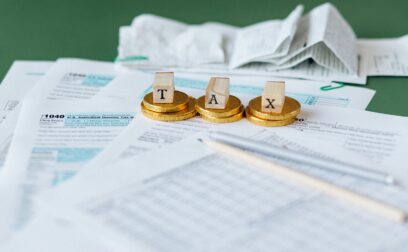TABLE OF CONTENTS
The Scientific Research and Experimental Development (SR&ED) tax credits program uses tax incentives to encourage Canadian businesses to conduct research and development (R&D) in Canada. Through our network of trusted partners, Swoop can help you quickly unlock cash from innovation being created by your business.
Businesses working on a technological advancement
Recover 64% or more of certain costs in the form of tax credits
Government tax relief for companies conducting R&D
Receive approval within 60 days in most cases
Application cost is linked to the size of your claim
Register your business with Swoop for access to tailored funding and savings opportunities
Page written by Michael David. Last reviewed on May 1, 2025. Next review due April 1, 2026.

The Scientific Research and Experimental Development (SR&ED) Program uses tax incentives to encourage Canadian businesses of all sizes and in all sectors to conduct research and development (R&D) in Canada.
Whether you have a startup, a small business, or a sizable enterprise, you may be able to take advantage of the SR&ED program.
There are three types of tax incentives:
The SR&ED Program is administered by the Canada Revenue Agency (CRA) and delivers more than $3 billion in tax incentives to over 20,000 claimants each year, making it the single largest federal program that supports business R&D in Canada.
If your business has expenses that are eligible for SR&ED, there are two main ways that you can benefit from the tax incentives:
The ITC is at least 15% and can be as much as 35% of your qualified expenditures. If you have any unused ITCs, you can carry them back three years or forward 20 years and apply them against tax payable for other years.
Your project must meet three criteria in order to be eligible for SR&ED:
Remember, the spirit of of the SR&ED program is to support research and development. That means you must be trying to break new ground in some manner. However, your project does not have to change the world and does does not have to lead to monetary success for your business.
The Canada Revenue Agency will use the following five questions to determine whether your project meets the eligibility criteria:
1. “Was there a scientific or technological uncertainty that could not be removed by standard practice/engineering?”
In order to pass this test, you will have to do something new or novel to overcome a scientific or technical hurdle. For example, imagine if a headphone manufacturer did not have enough capacity to produce headphones quickly enough to meet customer demand, and there was no known way to solve this problem using existing methods, so they conducted research and development to invent a new manufacturing process. The time spent on this project might qualify for the SR&ED program.
2. “Did the effort involve formulating a hypothesis specifically aimed at reducing or eliminating the uncertainty?”
The SR&ED program is not designed to support random experimentation, so another test is whether the project began with a reasonable hypothesis about what might work based on the initial evidence available. For example, the headphone manufacturer might have had reason to believe that certain manufacturing steps could be automated based on their experience of doing them manually, and then could have tested a series of prototypes based on this hypothesis.
3. “Was the adopted procedure consistent with the total discipline of the scientific method, including formulating, testing, and modifying the hypothesis?”
With this question, the Canada Revenue Agency is again trying to ensure that you are not engaging in random experimentation, but rather following a process that has a reasonable likelihood of resulting in developing something of value. To continue our example, the headphone manufacturer would have to show that they followed an iterative process that resulted in either a successful innovation that increases their manufacturing capacity or that proved it can not be achieved.
4. “Did the process result in a scientific or technological advancement?”
This question is pretty straightforward, but there are a couple of nuances that are worth pointing out.
One is that the advancement must be scientific or technological in nature, and not business-related per se. For example, inventing a machine that automates some steps in the manufacturing of headphones would likely qualify, but finding a better way to source headphone parts or improve headphone sales likely would not.
Secondly, even if you were not successful in making a scientific or technological advancement, you may still qualify as long as you were facing a legitimate challenge, had a reasonable hypothesis, and followed a process to tackle it. In this situation, you still furthered the knowledge base within your company by discovering a method that does not work, and perhaps this will assist you in succeeding with a future iteration.
5. “Was a record of the hypothesis tested and results kept as the work progressed?”
For many SR&ED applicants, this might be one of the more cumbersome tests to meet. It is crucial that you document everything about your research and development while it is happening, and not after the fact.
You must clearly show why each step of the project was required, and how much time each employee or contractor spent on it. After all, the SR&ED tax deductions and credits are largely based on recouping the cost of this time. This means keeping time sheets, notebooks, diaries, e-mails, meeting minutes and any other ways of validating and documenting your work.
The Canada Revenue Agency summarizes an SR&ED project as a set of interrelated activities that:
Because this program is focused on innovation, the CRA does not judge the ultimate commercial outcome. If you have an idea to make a technical improvement within your business, you can still potentially qualify for deductions or credits even if it does not result in a commercial benefit.
The SR&ED program is not designed to support what the Canada Revenue Agency calls “company projects,” such as building new facilities or expanding facilities, developing new products and product lines, changing business practices, upgrading processes and facilities, and engineering projects. A company project is a project with a commercial purpose, whereas the purpose of an SR&ED project is for the advancement of scientific knowledge or for achieving technological advancement. Having said that, a SR&ED project may take place within the broader context of a company project. For example, a certain leap in scientific or technological knowledge may be a necessary part of the process of developing a new product.
Here are some specific categories of ineligible work:
When you submit a claim under the SR&ED program, you must complete something known as the T661 Technical Narrative. This is where you describe why you started the project, what technical challenges you faced and how you attempted to overcome them. Writing this document is part art and part science, and there are some frameworks here and here that can help you tell a clear and persuasive story.
There are three general types of expenditures that you can claim in the SR&ED program:
Keep in mind, you do not get to claim 100% of these expenses. Canadian Controlled Private Corporations (CCPCs) are generally able to claim about 64% of salaries or wages, and about 32% of subcontractor fees. For materials, the percentage of costs covered is about 42%. The permitted claims for non-CCPC are roughly half of these amounts.
The SR&ED program offers a tax credit at a basic rate of 15% on qualified expenditures. This is a non-refundable tax credit that can only be applied to reduce income tax payable. This means its value is essentially capped by how much taxable income you have.
However, Canadian Controlled Private Corporations (CCPC) may also be entitled to earn a refundable tax credit at an enhanced rate of 35% on qualified expenditures, and this is capped at a maximum annual expenditure limit of $3 million.
This refundable tax credit is fantastic for smaller businesses and startups that may particularly benefit from the potential for improved cash flow. The benefits may be less for more established businesses, as the expenditure limit is reduced when the company’s taxable capital employed in Canada in the previous tax year exceeds $10 million and is eliminated when it reaches $50 million.
The maximum claim threshold for a Canadian Controlled Private Corporation (CCPC) is $3 million.
Start by summing up your allowable expenditures in the three categories of wages and salaries, sub-contractors and materials.
For staff, keep track of who was directly involved in carrying out qualifying work and the hours they spent on the task. Multiply their actual hourly rate if they were paid hourly, or a deemed rate if they are on salary.
For subcontractors, you can total all of the work for a given project and claim 80% of that amount.
For materials, you can claim the cost of materials used to build prototypes and the scrap materials that were consumed during SRED experiments.
Once you have a total, you must apply the right percentage to calculate your expected SR&ED credit. Assuming you have a Canadian small business corporation, you can expect to claim roughly 64% of salaries and wages, 32% of subcontractor fees, and 42% of material costs.
If you prefer, there is also a simplified method of filing that allows you to claim 55% of eligible salaries and wages.
To understand your exact claim amount, it is recommended to work with a professional advisor.
Canadian Controlled Private Corporations (CCPC) are generally able to claim about 64% of salaries or wages, and about 32% of subcontractor fees. For materials, the percentage of costs covered is about 42%. The permitted claims for non-CCPC are roughly half of these amounts.
In general, SR&ED should not be mixed with similar CRA grant programs. For example, the Industrial Research Assistance Program (IRAP) can contribute up to 80% of labour and subcontractor expenses for businesses that are developing innovative products and services or internally adopting new technology to improve processes and production. Because of the potential overlap with SR&ED, it is generally best to choose one program or the other. Applying for both will risk problems in the approval process.
Yes, you have to pay income tax on an SR&ED tax refund.
When you earn SR&ED investment tax credits (ITC), they are first applied to any income taxes that you may owe. If you are a Canadian Controlled Private Corporations (CCPC) and earn an ITC for an amount greater than the taxes you owe, the excess may be refunded to you by the Canada Revenue Agency in the form of a cheque or direct deposit.
You need to keep documents to show that eligible work was performed and allowable expenditures were incurred in the year for which you are filing your claim. This information should convey what work was done, who was involved with the work, when the work was conducted, and how you calculated the expenditures associated with the work.
Even of your claim is approved this year, the Canada Revenue Agency may contact you in a future year to review your documentation. For this reason, required records and supporting documents must be kept for a period of six years from the end of the last tax year to which they relate.
Examples of supporting information for SR&ED work and expenditures include (but are not limited to):
The SR&ED program is administered by the Canada Revenue Agency. To make a claim, there are forms that you need to complete and file with your income tax return, either by mail or online.
The CRA will assign technology advisors and financial reviewers to examine your SR&ED claim. These experts will assess whether your project qualifies and may visit you to review your documentation and other supporting evidence.
The CRA promises to process 90% of claims within 60 calendar days of being received, but it can take up to six months if your file is chosen for review.
The Government of Canada’s Scientific Research and Experimental Development Tax Incentive Program page has all the information you need on SR&ED. If you have further questions or need support, the CRA’s SR&ED contact information page has a number of tax services offices in regions across Canada to assist you with SR&ED claims.
Michael David is a financial writer and former investment advisor. Writing for Capital Group, Dimensional Fund Advisors, Franklin Templeton Investments, HSBC, Invesco, PIMCO, Vanguard, global insurance companies, major banks and others, he has educated professionals, business owners and consumers about strategies for investing, insurance, banking and corporate finance for more than 20 years.
Swoop promise
At Swoop we want to make it easy for SMEs to understand the sometimes overwhelming world of business finance and insurance. Our goal is simple – to distill complex topics, unravel jargon, offer transparent and impartial information, and empower businesses to make smart financial decisions with confidence.
Find out more about Swoop’s editorial principles by reading our editorial policy.
Join the 95,000+ businesses just like yours getting the Swoop newsletter.
Free. No spam. Opt out whenever you like.
Kingfisher Way, Silverlink Business Park, Newcastle upon Tyne, NE28 9NX, UK
View in Google Maps35 Bull Street, Lewis Building, Birmingham B4 6AF, UK
View in Google MapsAberystwyth Innovation and Enterprise Campus
Gogerddan Campus
Aberystwyth University
Ceredigion
SY23 3EE
Dogpatch Labs, The CHQ Building, Custom House Quay, Dublin, Ireland
View in Google MapsSuite 801, Level 8, 84 Pitt Street, Sydney, NSW 2000, Australia
View in Google Maps43 W 23rd St, New York, NY 10010, United States
View in Google Maps21 Dreyer Street, Cape Town, South Africa, 7708
View in Google MapsClever finance tips and the latest news
Delivered to your inbox monthly
Join the 95,000+ businesses just like yours getting the Swoop newsletter. Free. No spam. Opt out whenever you like.




